WM8960 Stereo CODEC: Pinout, Features and Datasheet
32 Termination 0.5mm CODEC 32 Pin 1.8V 32-VFQFN Exposed Pad
The WM8960 is a low power audio CODEC offering a combination of high quality audio, advanced features, low power and small size. These characteristics make it ideal for portable digital audio applications with stereo speaker and headphone outputs such as games consoles, portable media players and multimedia phones. Furthermore, Huge range of Semiconductors, Capacitors, Resistors and IcS in stock. Welcome RFQ.

How To Change Video Codec And Audio Codec With VLC Media Player?
WM8960 Pinout
The following figure is the diagram of WM8960 pinout.

Pinout
WM8960 CAD Model
The followings are WM8960 Symbol, Footprint, and 3D Model.

PCB Symbol
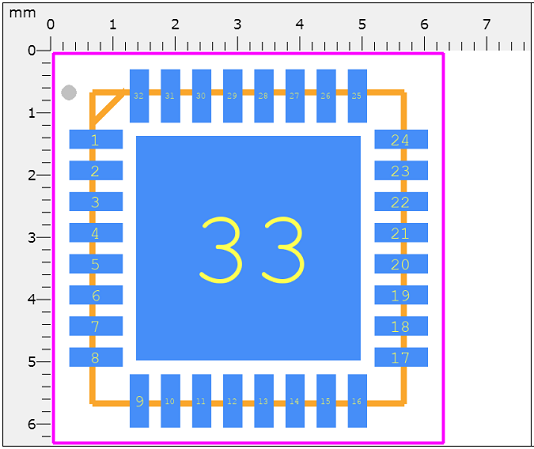
PCB Footprint
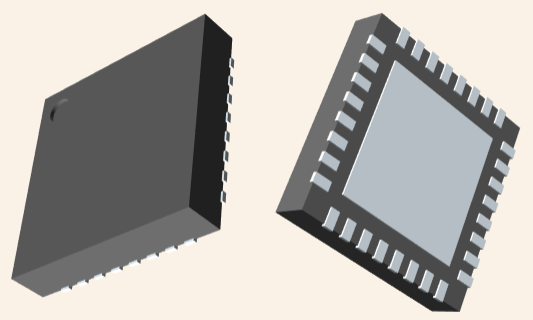
3D Model
WM8960 Overview
The WM8960 is a low power, high quality stereo CODEC designed for portable digital audio applications. The WM8960 operates at analogue supply voltages down to 2.7V, although the digital supplies can operate at voltages down to 1.71V to save power. The speaker supply can operate at up to 5.5V, providing 1W per channel into 8Ω loads. Unused functions can be disabled using software control to save power. The WM8960 is supplied in a very small and thin 5x5mm QFN package, ideal for use in hand-held and portable systems.
The WM8960 has a configurable digital audio interface where ADC data can be read and digital audio playback data fed to the DAC. The WM8960 is controlled by writing to registers through a 2-wire serial control interface. A control word consists of 16 bits. The WM8960 operates as a slave device only. The WM8960 has three control registers that allow users to select which functions are active.
This article provides you with a basic overview of the WM8960 Stereo CODEC, including its pin descriptions, features and specifications, etc., to help you quickly understand what WM8960 is.
WM8960 Features
● DAC SNR 98dB ('A' weighted), THD -84dB at 48kHz, 3.3V
● ADC SNR 94dB ('A' weighted), THD -82dB at 48kHz, 3.3V
● Pop and click suppression
● 3D Enhancement
● Stereo Class D Speaker Driver
◆ <0.1% THD with 1W per channel into 8Ω BTL speakers
◆ 70dB PSRR @217Hz
◆ 87% efficiency (1W output)
◆ Flexible internal switching clock
● On-chip Headphone Driver
◆ 40mW output power into 16Ω at 3.3V
◆ Capless mode support
◆ THD -75dB at 20mW, SNR 90dB with 16Ω load
● Microphone Interface
◆ Pseudo differential for high noise immunity
◆ Integrated low noise MICBIAS
◆ Programmable ALC / Limiter and Noise Gate
● Low Power Consumption
● Low Supply Voltages
◆ Analogue 2.7V to 3.6V (Speaker supply up to 5.5V)
◆ Digital core and I/O: 1.71V to 3.6V
● On-chip PLL provides flexible clocking scheme
● Sample rates: 8, 11.025, 12, 16, 22.05, 24, 32, 44.1, 48
● 5x5x0.9mm QFN package
Specifications
- TypeParameter
- Factory Lead Time19 Weeks
- Mount
In electronic components, the term "Mount" typically refers to the method or process of physically attaching or fixing a component onto a circuit board or other electronic device. This can involve soldering, adhesive bonding, or other techniques to secure the component in place. The mounting process is crucial for ensuring proper electrical connections and mechanical stability within the electronic system. Different components may have specific mounting requirements based on their size, shape, and function, and manufacturers provide guidelines for proper mounting procedures to ensure optimal performance and reliability of the electronic device.
Surface Mount - Mounting Type
The "Mounting Type" in electronic components refers to the method used to attach or connect a component to a circuit board or other substrate, such as through-hole, surface-mount, or panel mount.
Surface Mount - Package / Case
refers to the protective housing that encases an electronic component, providing mechanical support, electrical connections, and thermal management.
32-VFQFN Exposed Pad - Number of Pins32
- Weight188.609377mg
- Operating Temperature
The operating temperature is the range of ambient temperature within which a power supply, or any other electrical equipment, operate in. This ranges from a minimum operating temperature, to a peak or maximum operating temperature, outside which, the power supply may fail.
-40°C~85°C - Packaging
Semiconductor package is a carrier / shell used to contain and cover one or more semiconductor components or integrated circuits. The material of the shell can be metal, plastic, glass or ceramic.
Tray - Published2008
- Part Status
Parts can have many statuses as they progress through the configuration, analysis, review, and approval stages.
Active - Moisture Sensitivity Level (MSL)
Moisture Sensitivity Level (MSL) is a standardized rating that indicates the susceptibility of electronic components, particularly semiconductors, to moisture-induced damage during storage and the soldering process, defining the allowable exposure time to ambient conditions before they require special handling or baking to prevent failures
3 (168 Hours) - Number of Terminations32
- TypeStereo Audio
- Terminal Position
In electronic components, the term "Terminal Position" refers to the physical location of the connection points on the component where external electrical connections can be made. These connection points, known as terminals, are typically used to attach wires, leads, or other components to the main body of the electronic component. The terminal position is important for ensuring proper connectivity and functionality of the component within a circuit. It is often specified in technical datasheets or component specifications to help designers and engineers understand how to properly integrate the component into their circuit designs.
QUAD - Terminal Form
Occurring at or forming the end of a series, succession, or the like; closing; concluding.
NO LEAD - Number of Functions1
- Supply Voltage
Supply voltage refers to the electrical potential difference provided to an electronic component or circuit. It is crucial for the proper operation of devices, as it powers their functions and determines performance characteristics. The supply voltage must be within specified limits to ensure reliability and prevent damage to components. Different electronic devices have specific supply voltage requirements, which can vary widely depending on their design and intended application.
1.8V - Terminal Pitch
The center distance from one pole to the next.
0.5mm - Operating Supply Voltage
The voltage level by which an electrical system is designated and to which certain operating characteristics of the system are related.
3.6V - Interface
In electronic components, the term "Interface" refers to the point at which two different systems, devices, or components connect and interact with each other. It can involve physical connections such as ports, connectors, or cables, as well as communication protocols and standards that facilitate the exchange of data or signals between the connected entities. The interface serves as a bridge that enables seamless communication and interoperability between different parts of a system or between different systems altogether. Designing a reliable and efficient interface is crucial in ensuring proper functionality and performance of electronic components and systems.
2-Wire - Max Supply Voltage
In general, the absolute maximum common-mode voltage is VEE-0.3V and VCC+0.3V, but for products without a protection element at the VCC side, voltages up to the absolute maximum rated supply voltage (i.e. VEE+36V) can be supplied, regardless of supply voltage.
3.6V - Min Supply Voltage
The minimum supply voltage (V min ) is explored for sequential logic circuits by statistically simulating the impact of within-die process variations and gate-dielectric soft breakdown on data retention and hold time.
1.71V - Operating Mode
A phase of operation during the operation and maintenance stages of the life cycle of a facility.
SYNCHRONOUS - Sampling Rate
often described in the context of signal processing as the number of samples per time.
48 ksps - Voltage - Supply, Analog
Voltage - Supply, Analog is a parameter in electronic components that specifies the range of voltage levels required to power the analog circuitry within the component. This parameter indicates the minimum and maximum voltage levels that the component can accept for proper operation of its analog functions. It is crucial to ensure that the voltage supplied to the component falls within this specified range to prevent damage and ensure optimal performance. Understanding and adhering to the "Voltage - Supply, Analog" parameter is essential for the proper functioning of analog circuits in electronic components.
2.7V~3.6V - Voltage - Supply, Digital
Voltage - Supply, Digital is a parameter that specifies the voltage level required to power the digital circuitry within an electronic component, such as an integrated circuit or a microcontroller. This parameter is crucial for ensuring proper operation of the digital components, as supplying the correct voltage level is essential for reliable performance. The specified voltage range typically includes both minimum and maximum values within which the component can operate safely and efficiently. It is important to adhere to the recommended voltage supply range to prevent damage to the component and to maintain the integrity of the digital signals being processed.
1.71V~3.6V - Signal to Noise Ratio (SNR)
Signal to Noise Ratio (SNR) is a measure used in electronics to quantify the ratio of the strength of a desired signal to the strength of background noise. It is commonly expressed in decibels (dB) and is used to evaluate the quality of a signal transmission or processing system. A higher SNR indicates a stronger, clearer signal relative to the background noise, resulting in better performance and accuracy in electronic components such as amplifiers, receivers, and communication systems. SNR is crucial in ensuring reliable and efficient operation of electronic devices by minimizing the impact of unwanted noise on the signal quality.
94 dB - Number of D/A Converters2
- Resolution (Bits)
Resolution (Bits) in electronic components refers to the number of bits used to represent the analog signal in digital form. It indicates the level of detail or precision with which the analog signal can be converted into digital data. A higher resolution means more bits are used, allowing for finer distinctions to be made between different signal levels. For example, an 8-bit resolution can represent 256 different levels, while a 16-bit resolution can represent 65,536 levels. In general, a higher resolution leads to better accuracy and fidelity in the digital representation of the original analog signal.
24 b - Ambient Temperature Range High
This varies from person to person, but it is somewhere between 68 and 77 degrees F on average. The temperature setting that is comfortable for an individual may fluctuate with humidity and outside temperature as well. The temperature of an air conditioned room can also be considered ambient temperature.
85°C - Sigma Delta
In electronic components, "Sigma Delta" refers to a type of analog-to-digital converter (ADC) architecture commonly used in applications requiring high resolution and low noise. The Sigma Delta ADC works by oversampling the input signal at a much higher frequency than the desired output rate, and then using a digital filter to reduce the noise and quantization errors. This approach allows for achieving high resolution with relatively simple analog circuitry. The name "Sigma Delta" comes from the use of sigma (Σ) for the oversampling and delta (Δ) for the quantization error feedback mechanism. Overall, Sigma Delta ADCs are known for their ability to provide high-resolution conversion with low noise and are commonly used in audio, instrumentation, and sensor applications.
Yes - Number of ADCs / DACs2 / 2
- Filter
In electronic components, the parameter "Filter" refers to a device or circuit that is used to selectively allow certain frequencies to pass through while attenuating or blocking others. Filters are commonly used in electronic systems to remove unwanted noise or interference, shape the frequency response of a signal, or separate different signals in a multi-channel system.Filters can be categorized based on their frequency response characteristics, such as low-pass, high-pass, band-pass, and band-stop filters. Each type of filter has a specific cutoff frequency that determines the range of frequencies that are allowed to pass through. Filters can be implemented using various components such as resistors, capacitors, and inductors, or using digital signal processing techniques in software.Overall, filters play a crucial role in signal processing and communication systems by helping to improve signal quality, reduce interference, and enhance the performance of electronic devices.
YES - S/N Ratio, ADCs / DACs (db) Typ
The parameter "S/N Ratio, ADCs / DACs (db) Typ" in electronic components refers to the Signal-to-Noise Ratio of Analog-to-Digital Converters (ADCs) and Digital-to-Analog Converters (DACs). It represents the ratio of the desired signal level to the background noise level, typically measured in decibels (dB). A higher S/N ratio indicates better performance in terms of signal clarity and accuracy, as it signifies that the signal is stronger relative to any unwanted noise present in the system. This parameter is crucial in determining the quality and fidelity of analog-to-digital and digital-to-analog conversion processes in electronic devices.
94 / 98 - Companding Law
Companding law is a technique used in electronic components, particularly in audio and telecommunications systems, to reduce the dynamic range of signals for more efficient transmission and storage. It involves compressing the dynamic range of the signal at the transmitter end and expanding it back to its original range at the receiver end. This process helps to minimize the impact of noise and distortion during signal processing and transmission. Different companding laws, such as A-law and μ-law, are commonly used in various communication systems to optimize signal quality and efficiency.
A/MU-LAW - Height1mm
- Length5mm
- Width5mm
- REACH SVHC
The parameter "REACH SVHC" in electronic components refers to the compliance with the Registration, Evaluation, Authorization, and Restriction of Chemicals (REACH) regulation regarding Substances of Very High Concern (SVHC). SVHCs are substances that may have serious effects on human health or the environment, and their use is regulated under REACH to ensure their safe handling and minimize their impact.Manufacturers of electronic components need to declare if their products contain any SVHCs above a certain threshold concentration and provide information on the safe use of these substances. This information allows customers to make informed decisions about the potential risks associated with using the components and take appropriate measures to mitigate any hazards.Ensuring compliance with REACH SVHC requirements is essential for electronics manufacturers to meet regulatory standards, protect human health and the environment, and maintain transparency in their supply chain. It also demonstrates a commitment to sustainability and responsible manufacturing practices in the electronics industry.
Unknown - RoHS Status
RoHS means “Restriction of Certain Hazardous Substances” in the “Hazardous Substances Directive” in electrical and electronic equipment.
RoHS Compliant - Lead Free
Lead Free is a term used to describe electronic components that do not contain lead as part of their composition. Lead is a toxic material that can have harmful effects on human health and the environment, so the electronics industry has been moving towards lead-free components to reduce these risks. Lead-free components are typically made using alternative materials such as silver, copper, and tin. Manufacturers must comply with regulations such as the Restriction of Hazardous Substances (RoHS) directive to ensure that their products are lead-free and environmentally friendly.
Lead Free
WM8960 Functional Block Diagram
The following is the Block Diagram of WM8960.
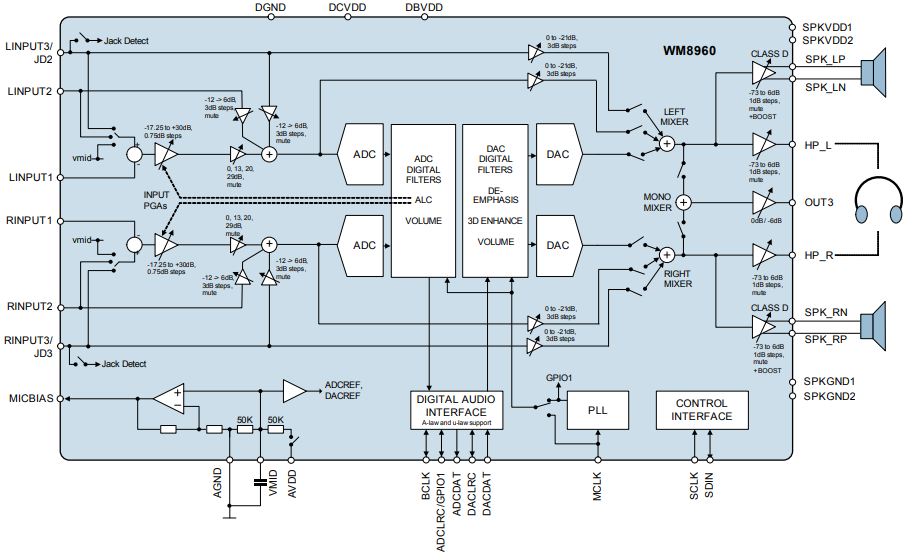
Block Diagram
Parts with Similar Specs
- ImagePart NumberManufacturerPackage / CaseNumber of PinsInterfaceNumber of D/A ConvertersSignal to Noise Ratio (SNR)Min Supply VoltageSupply VoltageMax Supply VoltageView Compare
WM8960CGEFL/V
32-VFQFN Exposed Pad
32
2-Wire
2
94 dB
1.71 V
1.8 V
3.6 V
32-VFQFN Exposed Pad
32
2-Wire, I2C, SPI, Serial, UART, USART
-
-
-
3 V
-
32-VFQFN Exposed Pad
32
2-Wire, I2C, SPI, UART, USART
-
-
-
5 V
-
32-VFQFN Exposed Pad
32
2-Wire, I2C, SPI, UART, USART
-
-
-
5 V
-
32-VFQFN Exposed Pad
-
-
-
-
-
1.8 V
-
WM8960 Applications
● Games consoles
● Portable media / DVD players
● Mobile multimedia
WM8960 Package
The following diagram shows the WM8960 package.

Top View

Bottom View

Side View

Detail 1
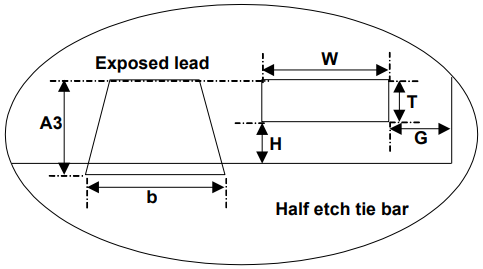
Detail 2
WM8960 Manufacturer
Cirrus Logic is a leader in high performance, low-power ICs for audio and voice signal processing applications. Cirrus Logic's products span the entire audio signal chain, from capture to playback, providing innovative products for the world's top smartphones, tablets, digital headsets, wearables and emerging smart home applications. With headquarters in Austin, Texas, Cirrus Logic is recognised globally for its award-winning corporate culture.
Trend Analysis
Datasheet PDF
- PCN Packaging :
- Datasheets :
How many stereo analog input channels does WM8960 have?
The WM8960 has three flexible stereo analogue input channels which can be configured as line inputs, differential microphone inputs or single-ended microphone inputs. Line inputs and microphone PGA outputs can be routed to the hi-fi ADCs or directly to the output mixers via a bypass path.
What is the use of automatic level control in WM8960? And how does that happen?
The WM8960 has an automatic level control that aims to keep a constant recording volume irrespective of the input signal level. This is achieved by continuously adjusting the PGA gain so that the signal level at the ADC input remains constant.
Can the digital 3D enhancement options available for WM8960 be used for recording?
The WM8960 has a digital 3D enhancement option to artificially increase the separation between the left and right channels. This effect can only be used for playback, not for record.
Under what circumstances can the timeout circuit in WM8960 automatically update the volume?
If there is a long period where no zero-crossing occurs, a timeout circuit in the WM8960 will automatically update the volume. The volume updates will occur between one and two timeout periods, depending on when the volume update bit is set.
What is the principle of protecting WM8960 from overheating?
The speaker and headphone outputs can drive very large currents. To protect the WM8960 from overheating a thermal shutdown circuit is included and is enabled by default. If the device temperature reaches approximately 1500℃ and the thermal shutdown circuit is enabled the speaker and headphone amplifiers will be disabled. This feature can be disabled to save power when the device is in standby mode.
![How to Use 2N3819? [Video]](https://res.utmel.com/Images/Article/a64515f9-a471-49f9-b346-a5fe0f422e73.jpg) How to Use 2N3819? [Video]
How to Use 2N3819? [Video]23 September 20221275
 Top Tips for Getting Started with EP2C5T144C8N FPGA Boards
Top Tips for Getting Started with EP2C5T144C8N FPGA Boards23 July 2025121
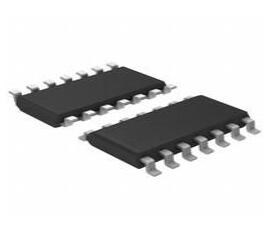 CD4047B Multivibrator IC: Datasheet, Pinout and Circuit
CD4047B Multivibrator IC: Datasheet, Pinout and Circuit19 July 20218083
 LP2951 Voltage Regulator: Pinout, Equivalent and Datasheet
LP2951 Voltage Regulator: Pinout, Equivalent and Datasheet23 October 20212836
 73S1215F System-on-Chip: Technical Specifications and Applications
73S1215F System-on-Chip: Technical Specifications and Applications29 February 2024138
 Guide to Reading the Toshiba 74HC245D Datasheet
Guide to Reading the Toshiba 74HC245D Datasheet18 August 202569
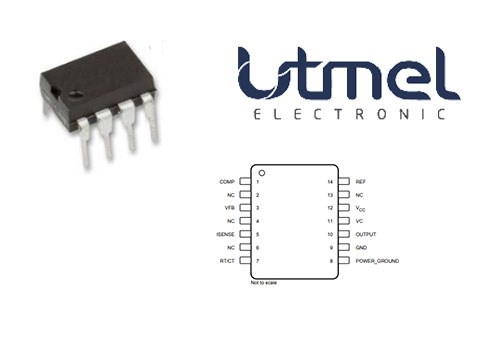 TL3845P Current-Mode PWM Controller:Description;Features and Pinout
TL3845P Current-Mode PWM Controller:Description;Features and Pinout25 February 20229600
 AD598 LVDT Signal Conditioning: Complete Setup & Calibration Guide
AD598 LVDT Signal Conditioning: Complete Setup & Calibration Guide05 July 2025573
 Global Power Technology Authorized Distributor | UTMEL Electronics
Global Power Technology Authorized Distributor | UTMEL Electronics21 November 20232437
 LDO VS DC to DC Converter
LDO VS DC to DC Converter11 March 202210332
 What are the Types and Dielectric of Ceramic Capacitors?
What are the Types and Dielectric of Ceramic Capacitors?16 October 202510731
 What is a Capacitive Sensor?
What is a Capacitive Sensor?31 October 20259044
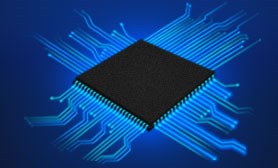 What is an LDO (Low Dropout Regulator)?
What is an LDO (Low Dropout Regulator)?29 October 20215134
 Introduction to Five Types of Classic Power Supply Circuits
Introduction to Five Types of Classic Power Supply Circuits08 March 20225285
 Chip Filters, Piezoelectric Materials and the Piezoelectric Effect
Chip Filters, Piezoelectric Materials and the Piezoelectric Effect27 September 20224831
 Advanced Wide-Bandgap Semiconductor Ultraviolet Photodetectors for Enhanced Detection and Imaging
Advanced Wide-Bandgap Semiconductor Ultraviolet Photodetectors for Enhanced Detection and Imaging04 December 20231621
Cirrus Logic Inc.
In Stock: 12
United States
China
Canada
Japan
Russia
Germany
United Kingdom
Singapore
Italy
Hong Kong(China)
Taiwan(China)
France
Korea
Mexico
Netherlands
Malaysia
Austria
Spain
Switzerland
Poland
Thailand
Vietnam
India
United Arab Emirates
Afghanistan
Åland Islands
Albania
Algeria
American Samoa
Andorra
Angola
Anguilla
Antigua & Barbuda
Argentina
Armenia
Aruba
Australia
Azerbaijan
Bahamas
Bahrain
Bangladesh
Barbados
Belarus
Belgium
Belize
Benin
Bermuda
Bhutan
Bolivia
Bonaire, Sint Eustatius and Saba
Bosnia & Herzegovina
Botswana
Brazil
British Indian Ocean Territory
British Virgin Islands
Brunei
Bulgaria
Burkina Faso
Burundi
Cabo Verde
Cambodia
Cameroon
Cayman Islands
Central African Republic
Chad
Chile
Christmas Island
Cocos (Keeling) Islands
Colombia
Comoros
Congo
Congo (DRC)
Cook Islands
Costa Rica
Côte d’Ivoire
Croatia
Cuba
Curaçao
Cyprus
Czechia
Denmark
Djibouti
Dominica
Dominican Republic
Ecuador
Egypt
El Salvador
Equatorial Guinea
Eritrea
Estonia
Eswatini
Ethiopia
Falkland Islands
Faroe Islands
Fiji
Finland
French Guiana
French Polynesia
Gabon
Gambia
Georgia
Ghana
Gibraltar
Greece
Greenland
Grenada
Guadeloupe
Guam
Guatemala
Guernsey
Guinea
Guinea-Bissau
Guyana
Haiti
Honduras
Hungary
Iceland
Indonesia
Iran
Iraq
Ireland
Isle of Man
Israel
Jamaica
Jersey
Jordan
Kazakhstan
Kenya
Kiribati
Kosovo
Kuwait
Kyrgyzstan
Laos
Latvia
Lebanon
Lesotho
Liberia
Libya
Liechtenstein
Lithuania
Luxembourg
Macao(China)
Madagascar
Malawi
Maldives
Mali
Malta
Marshall Islands
Martinique
Mauritania
Mauritius
Mayotte
Micronesia
Moldova
Monaco
Mongolia
Montenegro
Montserrat
Morocco
Mozambique
Myanmar
Namibia
Nauru
Nepal
New Caledonia
New Zealand
Nicaragua
Niger
Nigeria
Niue
Norfolk Island
North Korea
North Macedonia
Northern Mariana Islands
Norway
Oman
Pakistan
Palau
Palestinian Authority
Panama
Papua New Guinea
Paraguay
Peru
Philippines
Pitcairn Islands
Portugal
Puerto Rico
Qatar
Réunion
Romania
Rwanda
Samoa
San Marino
São Tomé & Príncipe
Saudi Arabia
Senegal
Serbia
Seychelles
Sierra Leone
Sint Maarten
Slovakia
Slovenia
Solomon Islands
Somalia
South Africa
South Sudan
Sri Lanka
St Helena, Ascension, Tristan da Cunha
St. Barthélemy
St. Kitts & Nevis
St. Lucia
St. Martin
St. Pierre & Miquelon
St. Vincent & Grenadines
Sudan
Suriname
Svalbard & Jan Mayen
Sweden
Syria
Tajikistan
Tanzania
Timor-Leste
Togo
Tokelau
Tonga
Trinidad & Tobago
Tunisia
Turkey
Turkmenistan
Turks & Caicos Islands
Tuvalu
U.S. Outlying Islands
U.S. Virgin Islands
Uganda
Ukraine
Uruguay
Uzbekistan
Vanuatu
Vatican City
Venezuela
Wallis & Futuna
Yemen
Zambia
Zimbabwe





















